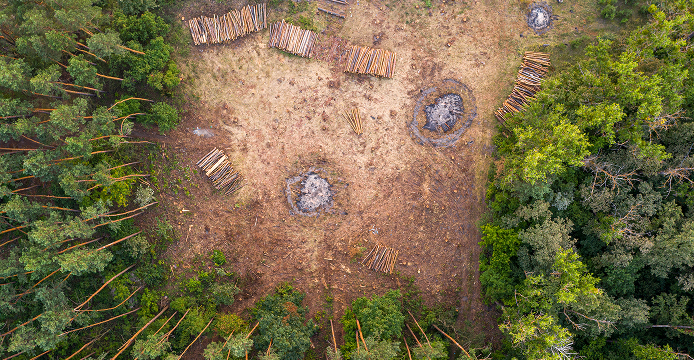

The road to Genting began with a nine-day expedition to the summit of Gunung Ulu Kali by our founder Tan Sri Lim Goh Tong himself in 1963.
Work for the Jalan Genting Highlands began in earnest in August 1965 and through the tireless efforts of countless individuals under the employ of the Genting Malaysia Group, the road was opened in 1969 with the first hotel being opened on 8 May 1971.
Because of this great legacy, we have worked tirelessly to improve and maintain the road, and what you see today is an approximately 24-km stretch of pristine private road that connects the thriving community that now calls Genting Highlands their home.
Each steep slope and bend was designed with the safety of our road users in mind and is meticulously maintained around the clock.
The Jalan Genting Highlands, which runs from Genting Sempah to Gohtong Jaya and up to the peak of Mount Ulu Kali, was designed, constructed, maintained, and operated by the Genting Malaysia Group to facilitate the movement of customers, visitors, guests, and personnel to Resorts World Genting.
Genting Malaysia fully owns the Jalan Genting Highlands and Lingkaran Cekap Sdn. Bhd. has been authorised to operate the Jalan Genting Highlands.
As an operator, Lingkaran Cekap is a dedicated Road Operations And Maintenance (ROAM) company that provides services and support to the Jalan Genting Highlands, promising ‘A Smoother Journey’ for customers of Resorts World Genting.
More than 7 million vehicles visit Resorts World Genting every year, not including vehicles that use the road to other destinations. Our slopes follow the natural undulations of the mountains, making upkeep a constant challenge. With more vehicles visiting each year, the wear and tear on the road is immense.
Historically, visitors to Resorts World Genting accounted for 70% of traffic on the road, but with developments rising from third parties, non-Genting Malaysia related traffic is projected to take over as the predominant road user.
This increase in non-Genting Malaysia road users has increased the cost of maintaining the Jalan Genting Highlands.
Between 2017 and 2023, Genting Malaysia spent more than RM160 million on road and slope maintenance, including operational costs such as street fixtures like e-gateways, emergency phones, lighting, and staff salaries.
We love our roads and take the responsibility of maintaining them seriously. Our teams, stationed at mid-hill and hilltop, are on standby 24/7 with CCTVs to detect traffic flow, road conditions, and weather.
Our trained emergency response teams are ready to provide breakdown assistance and traffic flow management, and we provide updated public advisories in case of any incidents.
Our staff are first responders in every crisis, from auxiliary police to medics. We keep a close eye on all that happens on the Jalan Genting Highlands, and our clearance crew is immediately deployed after any incident, from storms to other mishaps.
The Jalan Genting Highlands has enabled the tourism industry to grow and thrive in Genting Highlands, contributing opportunities for enterprise and employment, creating a vibrant local economy and contributing to the Pahang state economy.
For any enquiries please email enquiries@lingkarancekap.com.my.
Genting Malaysia has significantly contributed to the tourism economy, providing jobs to over 10,000 Malaysians annually. On top of this, we prioritise engaging locals for procurement and vendors, which benefits even more people.
Due to the resort's popularity, various businesses have also arisen in the area, including many property development plans that branch out further into the mountains from the Jalan Genting Highlands.
We recently collaborated with the Ministry of Housing and Local Government to build the Balai Bomba dan Penyelamat Gohtong Jaya. This new fire station will ensure a quicker and more effective response to fire or other emergencies.
While the fire station and quarters were one of our most recent collaborations with the government, we were also responsible for setting up the mountain’s first police station too, the Balai Polis Genting Highlands.
Closer to the community, through our Genting Green Generation (G3) program, we also regularly engage with schools nearby like SK Sri Layang.
We believe that a rising tide raises all boats, so we have cared and continue caring for the local community growing around us.

Of Genting Malaysia’s more than 10,000 acres of land, less than 10% has been developed, and habitats protected cover 90% of the total land owned.
When the first cable car, the Genting Skyway cable car, was being built in 1997, tree felling was minimised, and building materials were also airlifted to the site by helicopter.
Throughout the resort, exposed surfaces and slopes were planted with turf and hydroseeding to minimise soil erosion. This practice continues today with Genting Nature Adventures, where companies have been invited to sponsor our verging efforts to prevent and reduce erosion that may cause landslides.
Through this initiative we've managed to plant 5,763 trees to date to restore forest edges, and to protect our natural assets, we've set up ex situ (outside of its natural place) planting sites for endemic and rare native plants.
We designated three types of forests as Biodiversity Parks to achieve comprehensive biodiversity conservation and safeguard unused rainforests. This initiative develops features for biodiversity tourism and streamlines data collection for our sustainability initiatives.
Different forest and habitat preservation programmes are underway at each park. We conduct biodiversity impact assessments at four levels: global, policy, programme and planning, and project. Genting Malaysia collaborates with various organisations, external agencies, and species experts, including Jabatan Perhilitan Malaysia, and the Forest Research Institute Malaysia.
To read the full terms and conditions of the Jalan Genting Highlands click here.
